A Guide to German Shepherd Coat Colors

German shepherd coat colors are surely interesting to discover. The staple coat color of the German shepherd dog breed is the quintessential black and tan coat, but at a closer insight, there are a variety of German shepherd coat colors and variations that are very attractive and quite unique. Discovering all these German shepherd coat colors can be quite interesting for all dog lovers, especially for those folks enamored with the German shepherd dog breed. Did you know that the American Kennel Club recognizes a total of 11 German shepherd coat colors? Let’s take a look at them.
A Guide to German Shepherd Coat Colors
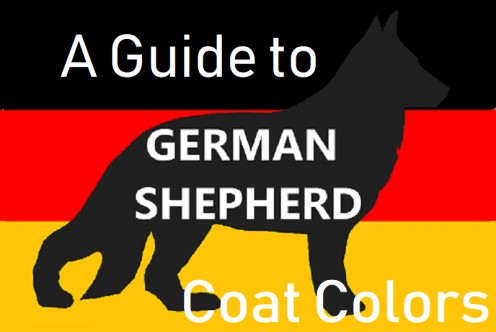
On top of a variety of coat colors, the German shepherd’s coat is double, and therefore, is composed by a dense, harsh and straight outer coat meant to protect from the harsh effects of the elements and a soft insulating inner coat to keep warm. Sometimes, the outer coat may also be slightly wavy, but curly hair is not permitted by American Kennel Club standards.
Typically, the head, paws and legs are covered in short hair, while the neck area and rear of the forelegs and hind legs are covered with longer and thicker hair.
While coat color is an appealing feature in this breed, it’s important to look beyond looks and recognize that there are other more important things to consider such as temperament, structure, working ability and health.
Caution is therefore often needed when purchasing puppies from breeders who focus on breeding mostly for “looks” and who make claims of selling puppies equipped with coat colors that are considered “rare.”
Ethical German shepherd breeders may charge thousands of dollars for their German shepherd puppies because they have pedigrees, papers, working titles, and come from specific champion lines, but perspective new puppy owners must be wary of shady or unethical breeders charging thousands of dollars for puppies only because of their coat colors. Backyard breeders and unethical breeders tend to perform little or no health and temperament screenings.
On a lighter note, one good thing about German shepherd coat colors is that no particular coat color seems to affect the health of the dog as it may happen in other dog breeds such as the blue doberman- it’s ultimately just a matter of color.
Typically, the head, paws and legs are covered in short hair, while the neck area and rear of the forelegs and hind legs are covered with longer and thicker hair.
While coat color is an appealing feature in this breed, it’s important to look beyond looks and recognize that there are other more important things to consider such as temperament, structure, working ability and health.
Caution is therefore often needed when purchasing puppies from breeders who focus on breeding mostly for “looks” and who make claims of selling puppies equipped with coat colors that are considered “rare.”
Ethical German shepherd breeders may charge thousands of dollars for their German shepherd puppies because they have pedigrees, papers, working titles, and come from specific champion lines, but perspective new puppy owners must be wary of shady or unethical breeders charging thousands of dollars for puppies only because of their coat colors. Backyard breeders and unethical breeders tend to perform little or no health and temperament screenings.
On a lighter note, one good thing about German shepherd coat colors is that no particular coat color seems to affect the health of the dog as it may happen in other dog breeds such as the blue doberman- it’s ultimately just a matter of color.
Black and Tan German Shepherd

The most common German Shepherd coat color is black and tan. This is ultimately the color that most people envision when thinking about the German shepherd breed.
The black is mostly seen on the face, ears and tail. There is also a black “saddle” on the back. The “saddle” is simply a black pigmented area found on the dog’s back and sides.
When the area covers more than just an area and it is darker, it may be referred to as a “blanket back.” Some specimens though may have very little black covering their back and sides.
Black and tan German shepherds are usually born very dark as puppies and tend to lighten up, with more and more tan areas receding as they grow and mature.
Although the black and tan is the most common color in this breed, there are several variations in color. The black and tan German shepherd coat color is registered under registration code 018.
When the area covers more than just an area and it is darker, it may be referred to as a “blanket back.” Some specimens though may have very little black covering their back and sides.
Black and tan German shepherds are usually born very dark as puppies and tend to lighten up, with more and more tan areas receding as they grow and mature.
Although the black and tan is the most common color in this breed, there are several variations in color. The black and tan German shepherd coat color is registered under registration code 018.
Black and Cream German Shepherd
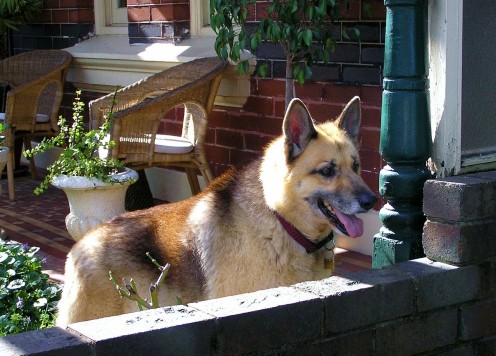
The black and cream German shepherd is known for having a coat with areas that are a lighter shade than tan. The black and cream German shepherd is registered under registration code number 010.
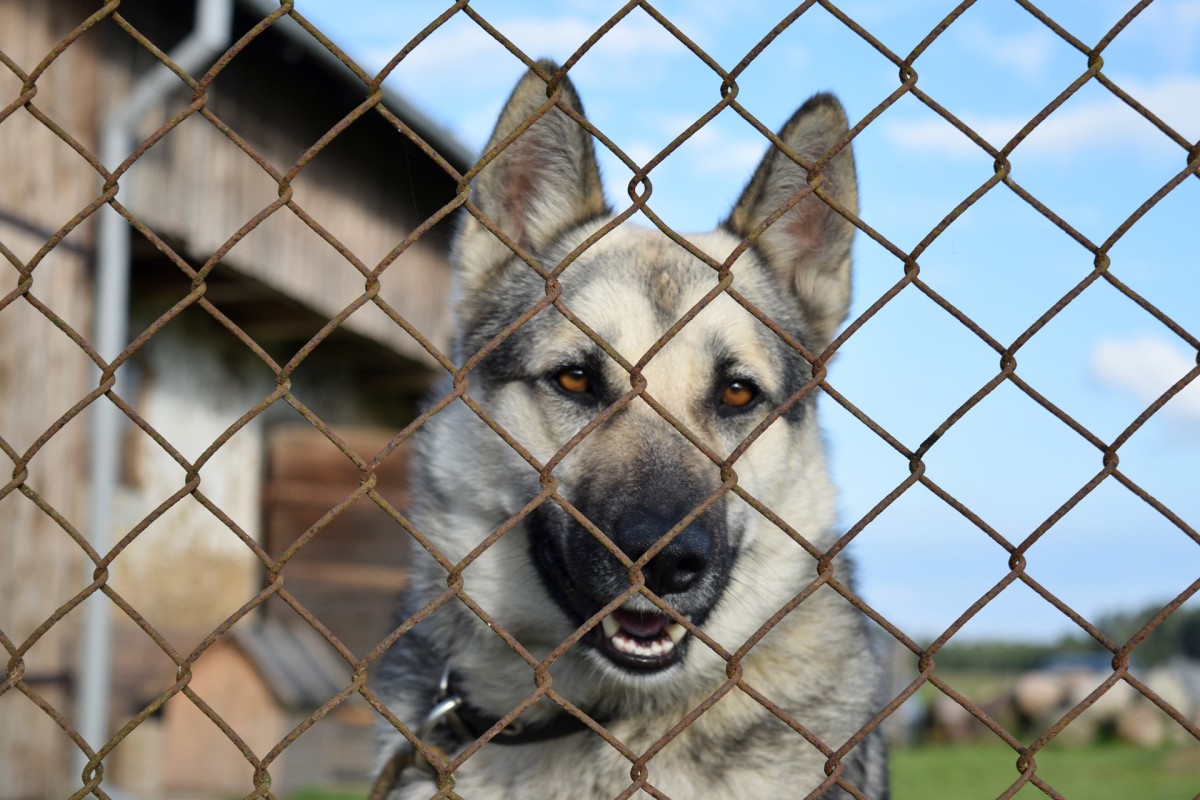
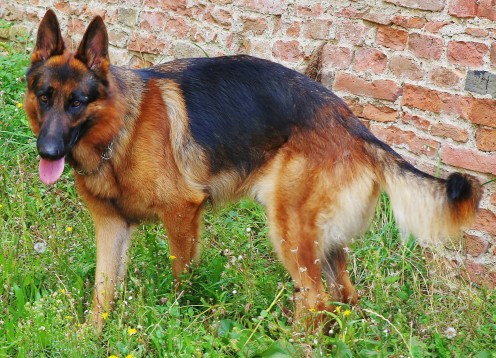
Bi-color German Shepherd
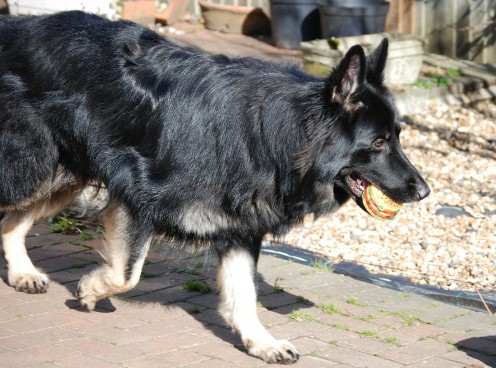
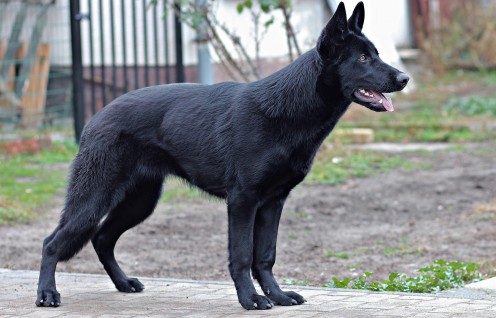
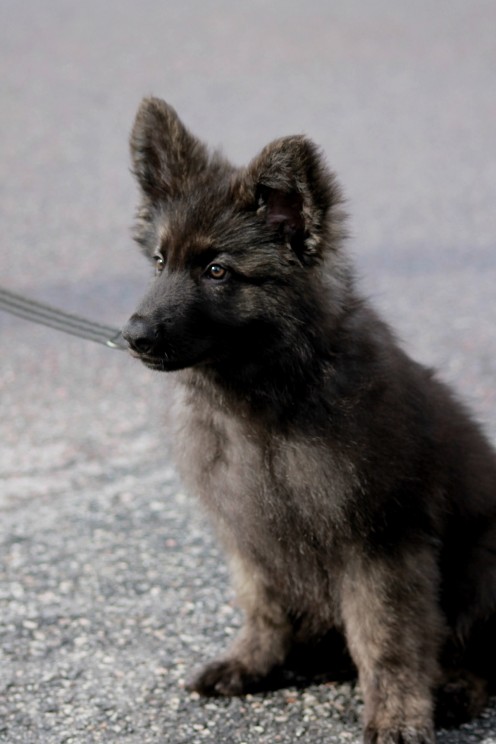
When “blue” is mentioned in the German shepherd breed, it’s of course not a Smurf-like blue but rather a sort of gray color. It’s important to consider that the final coat color of a young pup can only be ascertained once the outer ‘top coat” has developed.
The eyes are typically lighter in color, varying from amber to different shades of brown. The blue German shepherd is registered under registration code number 037.
The eyes are typically lighter in color, varying from amber to different shades of brown. The blue German shepherd is registered under registration code number 037.
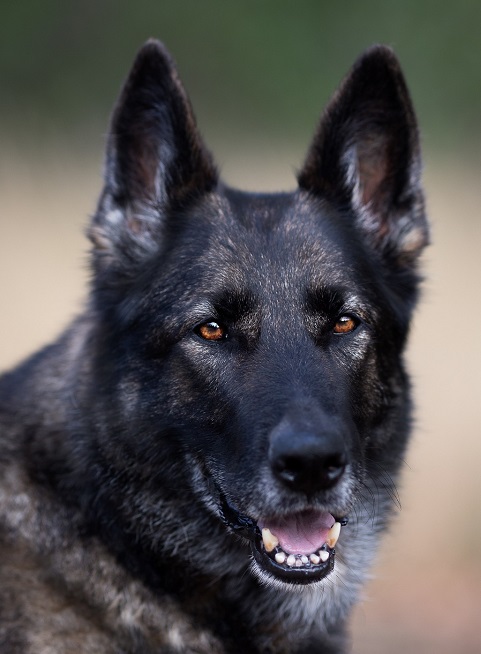
Although similar, the grey German shepherd should not be confused with the black and silver German shepherd considering that the American Kennel Club categorizes them separately and each have a unique registration code. These dogs are rather solid grey in color, but should not be confused with blue. The eyes are often blue in young pups and generally turn amber or light brown as they mature. The gray German shepherd is registered under registration code number 100.

The liver German shepherd coat, just as the blue German shepherd coat is considered a conformation fault by the American Kennel Club. According to the American Kennel Club standard “Pale, washed-out colors and blues or livers are serious faults.” This is because these coat colors are considered diluted, when instead the American Kennel Club standard requires rich coat colors.
However, both liver and blue German shepherd coat colors can be registered under the AKC as long as the parents are purebred. Liver German shepherds are registered under the registration code number 123.
Both of these coat colors are due to the presence of a recessive gene which must be be carried by the parents in order to generate the liver or blue coat color. It is not necessary for the parents to be liver to pass down this gene, all that’s needed is that they carry the liver recessive gene.
The liver coat color may pop out randomly in litters of breeding programs or they may be purposely produced through the effort of designer or specialty breeding programs.
However, both liver and blue German shepherd coat colors can be registered under the AKC as long as the parents are purebred. Liver German shepherds are registered under the registration code number 123.
Both of these coat colors are due to the presence of a recessive gene which must be be carried by the parents in order to generate the liver or blue coat color. It is not necessary for the parents to be liver to pass down this gene, all that’s needed is that they carry the liver recessive gene.
The liver coat color may pop out randomly in litters of breeding programs or they may be purposely produced through the effort of designer or specialty breeding programs.
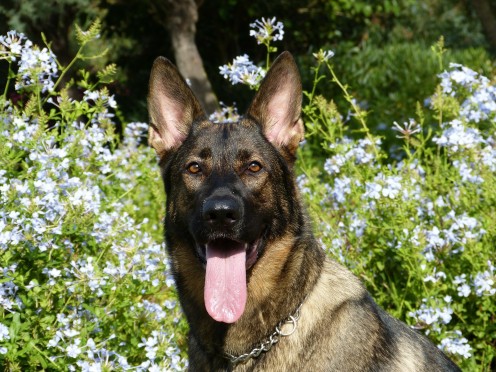
The sable coat color is the most dominant coat color. The very first German shepherd that was registered was a sable. This coat color is not common in show lines, but is common in working lines. The sable German shepherd is registered under registration code number 164.
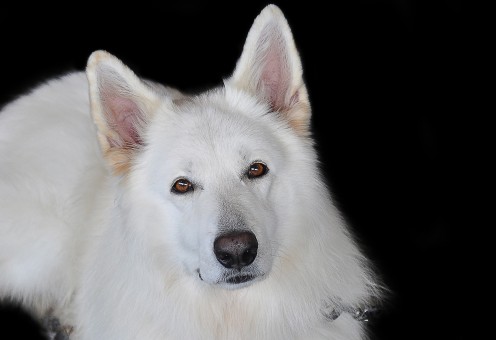
Some breeders have started calling their dogs “White shepherds” or “White Swiss shepherds” and have also requested to consider their dogs a separate breed.
It’s important to recognize that white German shepherds are not albinos and therefore do not lack pigment. According to the White German Shepherd Dog Club of America, White German Shepherd Dogs have brown eyes and have black pigment on their noses, around the mouth, on paw pads and around their eye rims.
The white coat color is due to a masking gene which masks the real coat color and pattern. A white German Shepherd can therefore be of any coat color and pattern found in the breed.
Despite all this controversy, the white coat color can still be registered with the American Kennel Club as long as both parents of the puppy are registered. The registration code for white German shepherds is 199.
It’s important to recognize that white German shepherds are not albinos and therefore do not lack pigment. According to the White German Shepherd Dog Club of America, White German Shepherd Dogs have brown eyes and have black pigment on their noses, around the mouth, on paw pads and around their eye rims.
The white coat color is due to a masking gene which masks the real coat color and pattern. A white German Shepherd can therefore be of any coat color and pattern found in the breed.
Despite all this controversy, the white coat color can still be registered with the American Kennel Club as long as both parents of the puppy are registered. The registration code for white German shepherds is 199.
Disclaimer
Please note that the pictures of German shepherd coat colors depicted in this article may not be 100 percent accurate. Color variations are always possible. There may be chances that some German shepherds depicted may not be 100 percent purebred. Consult with breed registries and breed clubs with any specific questions on coat colors.
References
- The German Shepherd Big Book: All About the German Shepherd Breed by Amy Morford
- White Shepherd, by Jean Reeves, Diana L. Updike
- White German Shepherd Dog Club of America: The White Gene
- The Daily Shep: Liver German Shepherds
- American Kennel Club: German Shepherd Breed Standard
- White German Shepherd Dog Club of America
Comentários
Postar um comentário